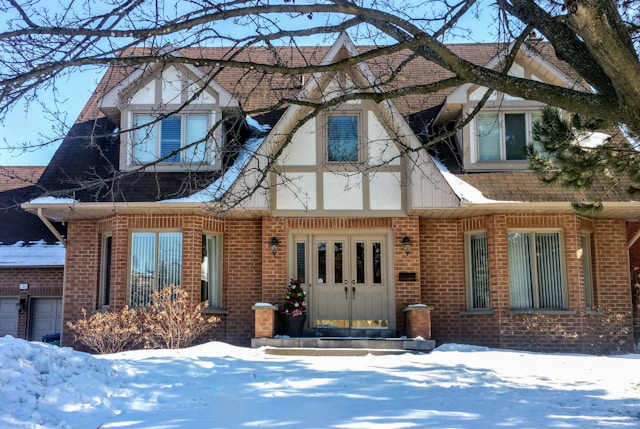
The Winter Risk for Vacant Properties
Canadian winters can be brutal, and an empty house is especially vulnerable to freeze damage. If a furnace fails or the power goes out during a cold snap, an unheated property can quickly drop below freezing. Water in the pipes may then freeze and expand until pipes crack or burst, sending water gushing through the home. The resulting destruction is often devastating and expensive – commonly exceeding $10,000 in repair costs. Worse, if the home is classified as vacant, insurance may not cover the damage unless strict precautions were taken. No homeowner or real estate agent wants to face this nightmare scenario, so prevention is crucial.
How Remote Temperature Monitoring Helps
One effective safeguard is a remote temperature monitor (often called a “freeze alarm”). This small device continuously checks the indoor temperature and sends an alert if the reading falls dangerously low (around 45°F or 7°C). If the furnace stops and the house starts to freeze, the monitor will immediately notify you – via text message, email, or phone call – that there’s a problem. Most modern freeze alarms even allow multiple parties to be alerted at once, so the homeowner, agent, and a caretaker can all get the warning. With an early heads-up, someone can fix the heat or otherwise protect the pipes before they freeze.
Small Devices, Big Benefits
These monitoring gadgets are simple to set up and easy to move from one property to another.
Typically, you plug the device into an outlet (many also have a battery backup) and it starts watching the temperature. Because there’s no complex installation and they use cellular, you can reuse one unit across multiple vacant homes or listings – just unplug it and take it to the next property once the house is sold.
Extra Safeguards – Power and Smoke Alerts
Many remote temperature monitors will also alert you to related issues. For example, a unit can detect a power outage (which likely means the furnace is off) or recognize the sound of a smoke detector alarm, and notify you immediately. These extra safeguards mean the device isn’t just watching for freezing pipes – it can also warn of a fire or other emergency.
No WiFi? No Problem
Some monitoring devices use the home’s Wi-Fi to send alerts, but others rely on built-in cellular service – ideal for properties with no internet connection which is common for houses that are empty and on the market. CabinPulse, for example, is a Canadian option (designed in Saskatchewan) that works entirely via cellular – no local Wi-Fi needed. This means even a brand new build without WiFi can still automatically text or email you if the heat fails or a smoke alarm triggers.
Peace of Mind for Realtors and Sellers Alike
A remote temperature monitor is a simple tool that can prevent a very costly disaster. For a relatively small investment, you gain an automatic warning system for furnace failures, frozen pipes, and even potential fires in an unoccupied home. By getting alerts at the first sign of trouble, you can take action before a minor temperature drop turns into a catastrophe. These devices are portable and reusable, making them a marketable addition to any realtor’s winter toolkit for vacant properties





